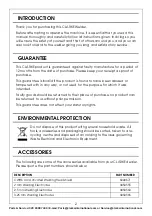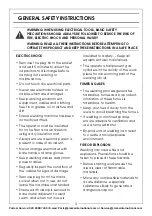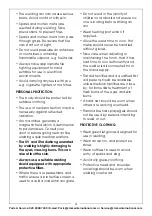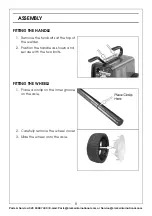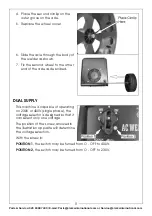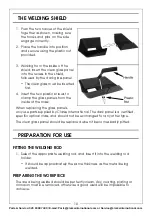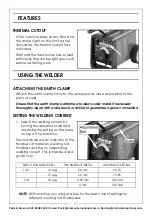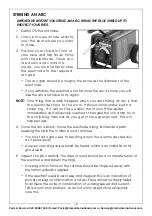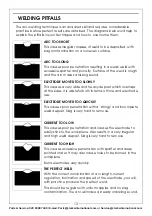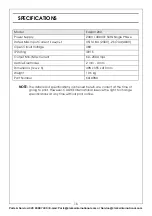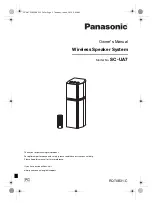
5
Parts & Service: 020 8988 7400 / E-mail: [email protected] or [email protected]
• Wear a helmet or safety goggles or
glasses with side shields
underneath, appropriate filter
lenses or plates (protected by clear
glass). This is a MUST for welding
(and chipping) to protect the eyes
from radiant energy and spatter.
Replace cover glass when broken,
pitted, or spattered.
NOTE: ALL protective wear inc. masks
& head shields MUST comply with PPE
Directive 89/686/EEC
ADDITIONAL SAFETY PRECAUTIONS
FOR ARC WELDERS
• NEVER attempt to remove any of
the panels unless the machine is
disconnected from the power
supply.
• NEVER use the machine with any of
the panels removed.
• NEVER attempt any electrical or
mechanical repair unless your are
a qualified technician. If you have
a problem with the machine
contact your local CLARKE dealer.
• NEVER use or store in a wet/damp
environment. DO NOT EXPOSE TO
RAIN.
• NEVER allow children or animals in
the vicinity of a welding operation.
• ALWAYS remove all flammable
materials from the welding area.
• ALWAYS ensure that there is full free
air circulating around the outer
casing of the machine, and that
the louvres are unobstructed.
• Welding arc can seriously damage
your eyes. Both the operator and
any spectators should always use a
proper welding face shield or
helmet, with suitable filter lenses.
Proper gloves and working clothes
should be worn at all times.
• ALWAYS wear a pair of safety
spectacles/goggles when
chipping away slag after welding.
Remember, ordinary eye glasses
are not safety gasses.
• ALWAYS ensure there is adequate
ventilation or extraction in the work
area as the welding process gives
off toxic fumes.
• ALWAYS ensure there is a fire
extinguisher on hand.
• ALWAYS ensure that a medical
supply is on hand, and that
treatment for burns is available.
SAFETY SYMBOLS
General Warning,
indicates that failing to
follow these instructions
could result in injury or
damage to the machine.
Recycle unwanted
materials instead of
disposing of them as
waste. All tools,
accessories and
packaging should be
sorted, taken to a recycling centre
and disposed of in a manner which is
compatible with the environment.
Summary of Contents for EASIARC 200
Page 20: ......


